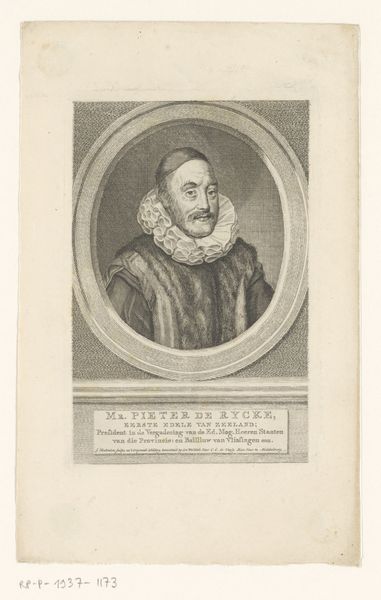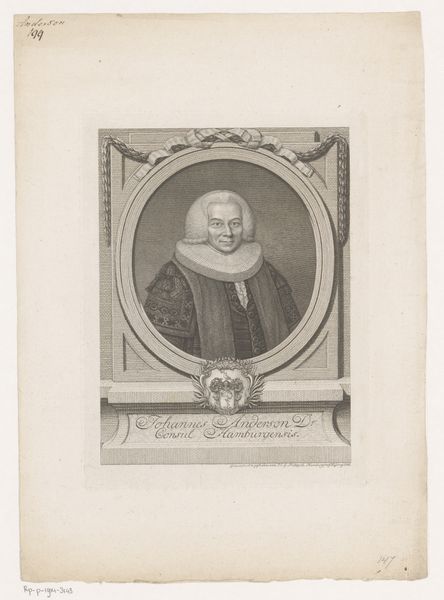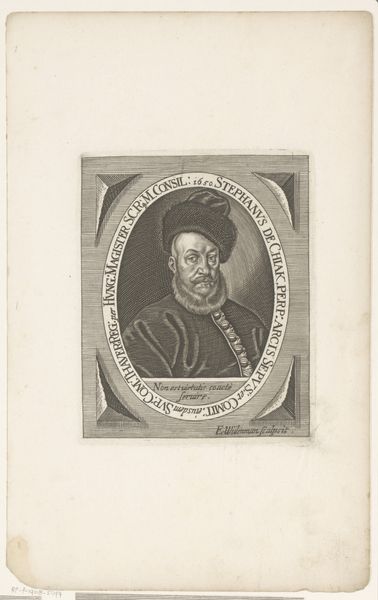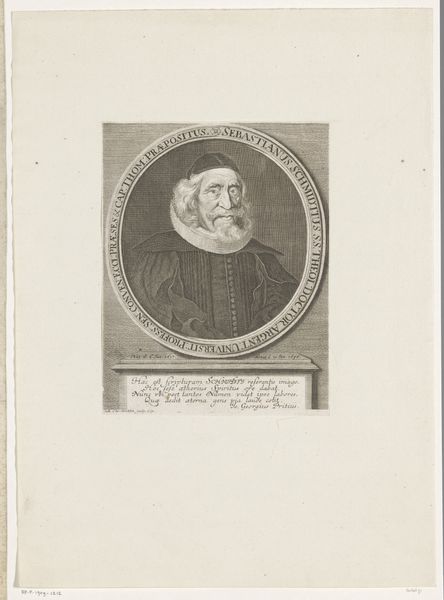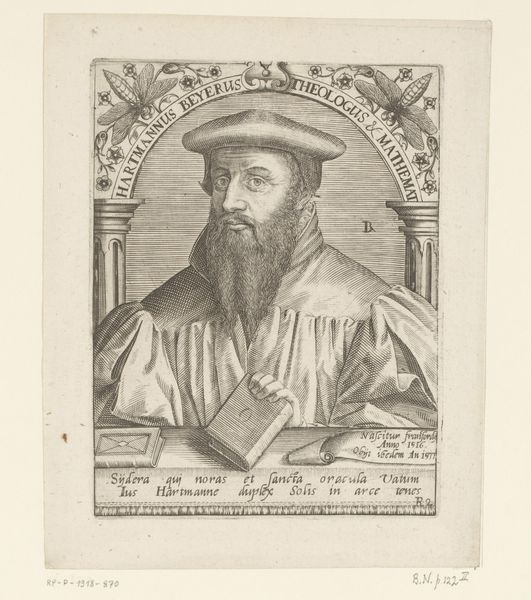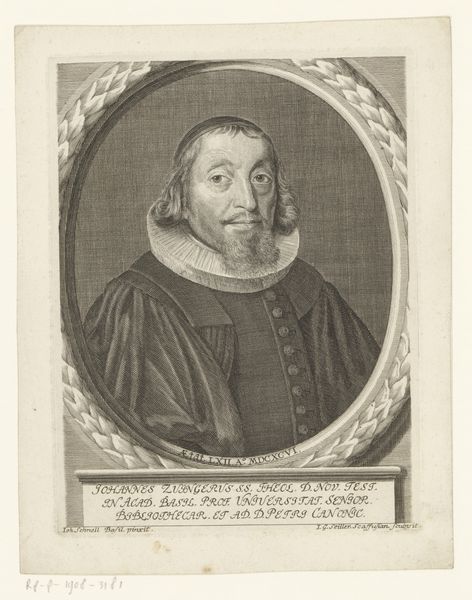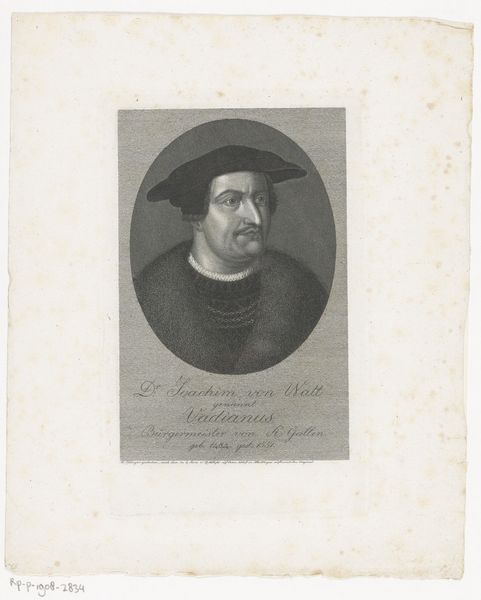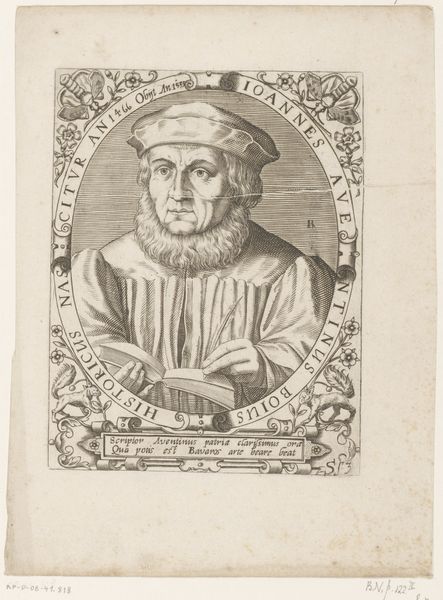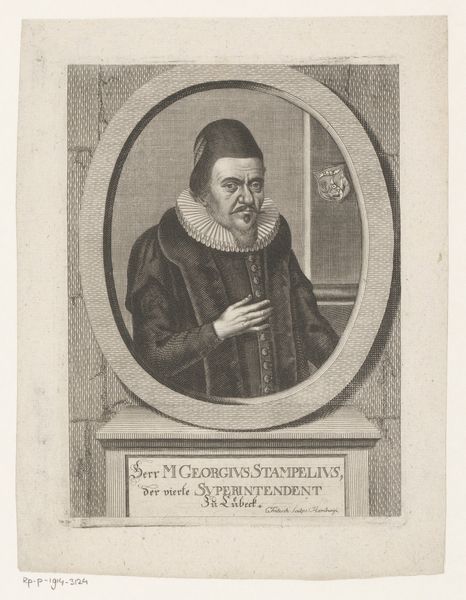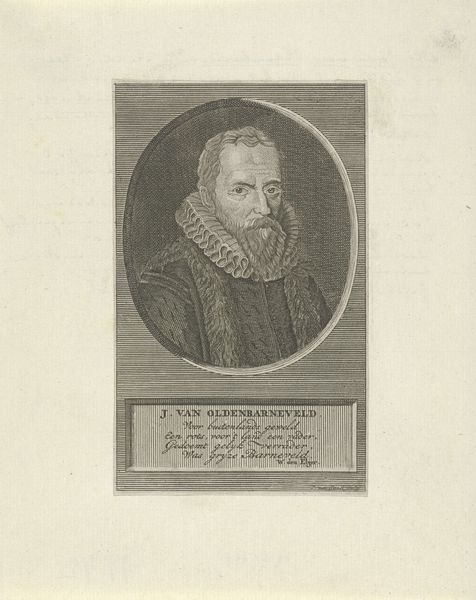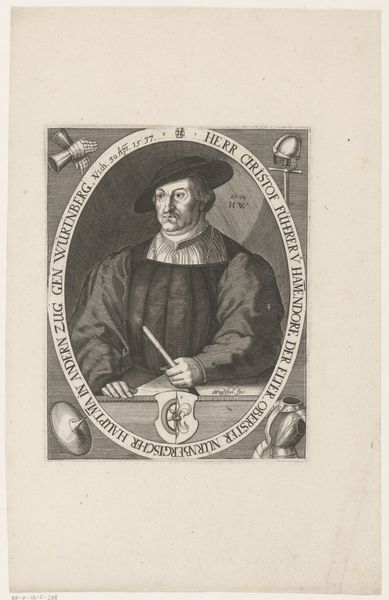
print, engraving
#
portrait
# print
#
old engraving style
#
pencil drawing
#
history-painting
#
engraving
Dimensions: height 164 mm, width 121 mm
Copyright: Rijks Museum: Open Domain
Curator: This print, housed here at the Rijksmuseum, is a portrait of Hans Holbein the Younger, and dates to before 1756. The engraving captures Holbein's likeness with striking detail. Editor: My first impression is its precision. You can almost feel the texture of the paper, the weight of the ink. There's a sense of craft that speaks to a particular moment in printmaking. Curator: Indeed, engravings like this played a crucial role in disseminating images and knowledge in the 18th century. They democratized access to portraiture and information, effectively shaping public perceptions of historical figures like Holbein. Editor: But let's consider the labor involved. Each line, each shadow meticulously etched. It makes you wonder about the engraver’s skill, their apprenticeship, and the social status of printmakers within the art world. Was this commissioned, or was the artist making his living in the market of printed likeness? Curator: That's an excellent question. Printmaking was a profession navigating complex relationships between patronage, the art market, and intellectual circles. The rise of printed portraits was definitely a part of the growing celebrity culture, and the commodification of reputation in the Early Modern Period. Editor: Absolutely, and think about the materiality. Copperplates were precious! Each engraving had to be economical, producing the largest edition possible. These prints weren’t mere artworks; they were units of value, extending the portrait beyond the elite, expanding it into a wider circulation network. Curator: It's also fascinating to consider the original context. How would this portrait have been displayed or used? Was it bound into a book, displayed on a wall, or traded among collectors? Each of these contexts carries social and historical weight. Editor: So true! And how would this process have been received within other artistic communities that privileged paintings and other more expensive media? This humble material connects us directly to a complex web of material and cultural relationships of its time. It prompts so many questions regarding art as work and labor. Curator: The beauty of an artwork lies not just in the image itself, but in the dialogue it ignites, connecting us to the past in tangible, thought-provoking ways. Editor: Precisely! Analyzing it through its creation helps us uncover the interwoven social fabric.
Comments
No comments
Be the first to comment and join the conversation on the ultimate creative platform.

